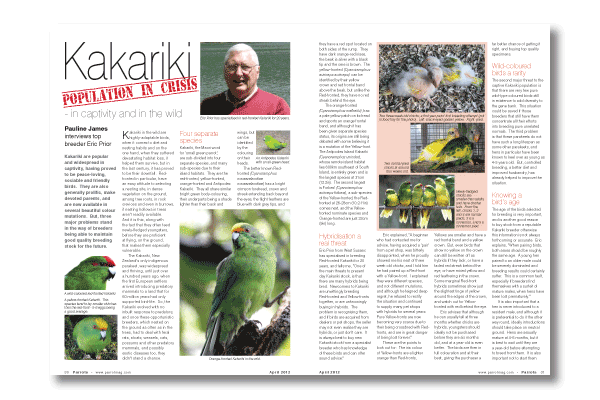Pauline James interviews top breeder Eric Prior
Kakariki are popular and widespread in captivity, having proved to be peace-loving, sociable and friendly birds. They are also generally prolific, make devoted parents, and are now available in several beautiful colour mutations. But, three major problems stand in the way of breeders being able to maintain good quality breeding stock for the future.
Kakariki in the wild are highly-adaptable birds, when it comes to diet and nesting habits and on the one hand, when they suffered devastating habitat loss, it helped them survive, but in the last century, it has proved to be their downfall. Red-fronted in particular, have an easy attitude to selecting a nesting site, in dense vegetation on the ground, among tree roots, in rock crevices and even in burrows, if nesting hollows in trees aren’t readily available. And it is this, along with the fact that they often feed newly-fledged youngsters, before they are proficient at flying, on the ground, that makes them especially vulnerable.
Read more in the magazine…









Parrot Chat
Buyers Guides
Breeding articles